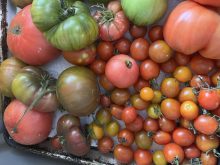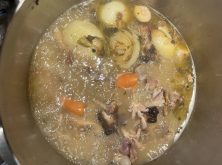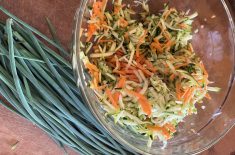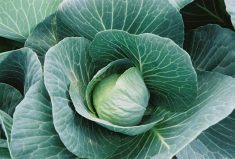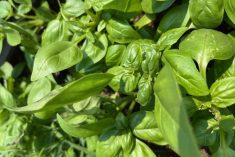Some proverbs! “It is a wise father that knows his own child.” I don’t often hear that one anymore, but it was a common expression when I was a kid. Conversely there’s a proverb that says, “It’s a wise child that knows its own father.” There’s this one for a young man seeking a mate: “He who would the daughter win, must with the mother first begin.”
What varieties of tomato seeds are you sowing? Recently I wrote about a classic heirloom beefsteak-type tomato called Mortgage Lifter OP. OP stands for open pollination in the world of tomatoes and other plant seeds, but what does it mean? Such designation indicates that seeds collected and saved for future planting are not hybrids. When sown, they produce seedlings whose crop is true and is the same in design and nature as the original parentage.
Parthenocarpic tomatoes (and some cucumber varieties too) are those that can set fruit as much as two weeks before other varieties. The first fruits that appear will be seedless, because the flowers are all female and do not require pollination to set fruit. Later in the season, some pollination may occur, and fruits will form seeds.
Read Also

Gentle treatments for pain in the neck
Heading toward year-end, people unknowingly tense up against the cold and busyness, causing neck pain that can often be treated with appropriate support and gentle mobility, athletic therapist Kathlyn Hossack says.
Kindness and love are action words that require practise and don’t come easy for some folks. I’m kind of a patriotic guy and love to fly the flag. I also love to keep company with my Grainews readers. To all of you, from Lethbridge, Alta., to Lockport, Man., and close or far beyond, plug in the kettle and let’s brew some green tea and take an imaginary sip with a cowboy-sized slice of mom’s apple pie. The more the merrier as I tip my hat of welcome. Let’s bloom where we’re planted.
Bishop’s Flower
Bishop’s Flower is an open-pollinated variety that is the natural species version of False Queen Anne’s Lace (Ammi majus). It looks good in almost any setting, adding a touch of naturalistic, yet royal beauty (see photo at top). The stiff, upright stems bear giant umbels, up to 15 centimetres (six inches) wide, of tiny white flowers that act as a magnet for beneficial insects. Not only do the flowers attract and feed pollinators, but they also attract a host of predatory insects that will scour the garden looking for pests to eat. Lacewings, lady bugs or ladybirds, hoverflies and parasitoid wasps all take up residence where Bishop’s Flower is planted, and they do a terrific job of minimizing damage from aphids and caterpillars.
Bishop’s Flower is useful as a cut flower in bouquets for events such as weddings, birthdays and other celebratory occasions. It is an easy-to-grow annual that likes full sun to light shade exposure and blooms from mid- to late summer. You can save mature ripened seeds, which will come back true. There are several options for future planting. Seedlings can be started indoors in spring if desired but chill the seeds first for a couple of weeks in the fridge. Seeds can also be directly sown outdoors in cool spring soil, even if a light frost is possible, and they will germinate somewhere between seven to 21 days depending on weather. Bishop’s Flower can also be directly seeded outdoors in late autumn and it will germinate the following spring. The plants prefer cool, rich, moist soil. Water regularly until established and then only during hot, dry weather.
Pumpkin on a stick
I remember mock apple pie made with Ritz crackers. Today we introduce mini Pumpkin on a Stick, sometimes referred to as Mock Tomato, but mini tomatoes they are not. Pumpkin on a Stick (Solanum aethiopicum) is an unusual cousin of the traditional eggplant. It is also called Hmong eggplant, Ethiopian nightshade and Chinese scarlet eggplant.

The small orange fruits of Pumpkin on a Stick develop along prickly stems and emerge from attractive, bushy plants at the end of summer. The fruits are used in certain Asian dishes, but they are bitter and need to be prepared carefully. Pumpkin on a Stick is grown primarily for harvest and autumn show displays, producing tiny ornamental pumpkins that are left to dry. The plants grow well in containers and on raised beds in warm, sheltered outdoor spots, and they are particularly productive in a greenhouse setting. Pumpkin on a Stick is sold as seeds to be started in a greenhouse or indoors. Follow instructions on the seed packet. Highly ornamental plants will mature in 70 days. Seeds are open pollinated so you can save them for future sowing.
Seeds for Pumpkin on a Stick and the aforementioned Bishop’s Flower can be purchased from West Coast Seeds in Delta. B.C., 1-888-804-8820, [email protected], or visit westcoastseeds.com.
Sue Kraft’s Pickled Carrot Recipe
From: Susan Kraft
Hello Ted. How are you this fine snowy 1st of February? Below is my recipe for pickled carrot. As you can see, I use my dill pickle recipe. This recipe comes from my Grandma Johanna, my father’s mom. My mom (Mom Rutley) got it from her. Enjoy.
Dill Pickles
Ingredients:
- Fresh picked cucumbers and/or carrots
- Fresh ferny dill leaves
- 12 cups (3 quarts) water
- 1 cup pickling salt
- fresh dill seed heads
- 2 or 3 garlic cloves (peeled) per jar
- 5 cups (1-1/4 quarts) white vinegar
Method:
- Wash and clean cucumbers/carrots and peel garlic cloves.
- Into the bottom of each sterilized quart jar, place one garlic clove and a dill head.
- Add medium cucumbers, vertically (about five to six cukes or a dozen or more carrots depending on size).
- Add some dill leaves and one or two more garlic cloves, then finish filling jar with cucumbers/carrots.
- Measure water, salt and vinegar into a heavy pot and bring to a boil.
- Fill jars almost to the brim and seal with sterile lids and rings.
Notes: You can mix cucumbers and carrots together or do them separately. I use the small (finger size and smaller) carrots, whole or diced.
Cheers, Sue Kraft





